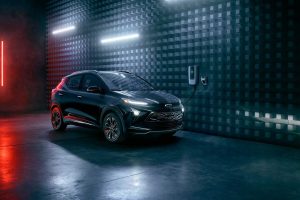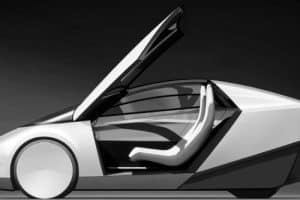- 🚗 Rivian CEO RJ Scaringe wanted to establish a different path for his company, unlike Tesla.
- 🤔 Tesla started by creating a high-priced sports car to fund future projects, a strategy Rivian intentionally avoided.
- 🛤️ Scaringe aimed to create a new narrative for Rivian focusing on different vehicle types and sustainable transportation.
- 🙌 Despite the divergence in strategy, Scaringe holds great respect for Tesla’s achievements in the EV sector.
- 🔄 Rivian’s approach represents a shift in mindset about sustainable transportation solutions, differentiating it from competitors.
In the ever-evolving world of electric vehicles (EVs), Rivian stands out not just for what it builds, but for how it approaches the journey. Under the visionary leadership of CEO RJ Scaringe, Rivian has charted a course that strategically veers away from the trailblazed by Tesla. Let’s delve into how Rivian is creating its unique narrative in the world of EVs and why this matters for the future of sustainable transportation.
A Distinctive Start: Diverging from Tesla’s Roadmap
From the outset, Rivian decided against following the well-trodden path of starting with a high-priced, luxury sports car — a route that Tesla successfully used to secure capital for subsequent projects. Instead, Scaringe made the strategic decision to focus on a broader market, opting to launch with the R1T pickup truck and the R1S SUV.
The Tesla Model: Establishing the Brand through Exclusivity
Tesla’s journey commenced with the Roadster, a high-performance sports car with a price tag set to attract the affluent, ultimately acting as a fundraising tool to develop mass-market vehicles such as the Model S, Model 3, and beyond. This approach required navigating considerable financial hurdles, but it successfully positioned Tesla as a leader in the EV space.
Rivian’s Unique Trajectory
- Broader Market Focus: By starting with rugged, versatile vehicles like the R1T and R1S, Rivian taps into sectors of the automotive market that are burgeoning with potential yet underrepresented in the electric market.
- Creating a New Narrative: Rivian aims to redefine the narrative around what sustainable transportation can look like, leveraging a product range that reflects both innovation and practicality.
Embracing Variety and Sustainability
Rivian has positioned its product offerings to not just ride the wave of EV novelty but to instigate a shift in consumer mindsets about sustainable transportation. This approach involves creating a diverse vehicle mix that echoes a commitment to both environmental stewardship and customer needs.
- Vehicle Versatility: Rivian’s focus on trucks and SUVs meets the growing consumer demand for utility vehicles, blending sustainability with functionality.
- Sustainability Goals: Rivian aims to inspire a societal shift towards eco-friendly practices, championing the potential for a future where electric vehicles are seen as sustainable, everyday choices rather than luxury options.
A Vision with Mutual Respect
While Rivian has chosen a different path, Scaringe has expressed admiration for Tesla’s influence and contributions to the industry. This speaks volumes about the approach Rivian is taking — one that is not about outpacing or overshadowing competitors, but about achieving its distinctive success through strategic and thoughtful differentiation.
The Road Ahead: What Does This Mean for the EV Industry?
Rivian’s intentional deviation from the Tesla model underscores a broader theme within the industry: there is no singular blueprint for success. As new entries into the EV market contemplate their strategies, Rivian offers a compelling example of how to leverage innovation and market insight for growth.
Key Takeaways for Industry Stakeholders
- Diverse Business Models: The importance of recognizing varied business models can lead to success in the EV industry, encouraging new entrants to innovate based on unique market needs.
- Consumer-Centric Innovation: Emphasizing consumer demands like sustainability and versatility can drive brand loyalty and expand market reach.
- Collaboration Over Competition: Respect between industry players like Rivian and Tesla can catalyze rather than stifle innovation, pushing the boundaries of what is possible in sustainable transportation.





